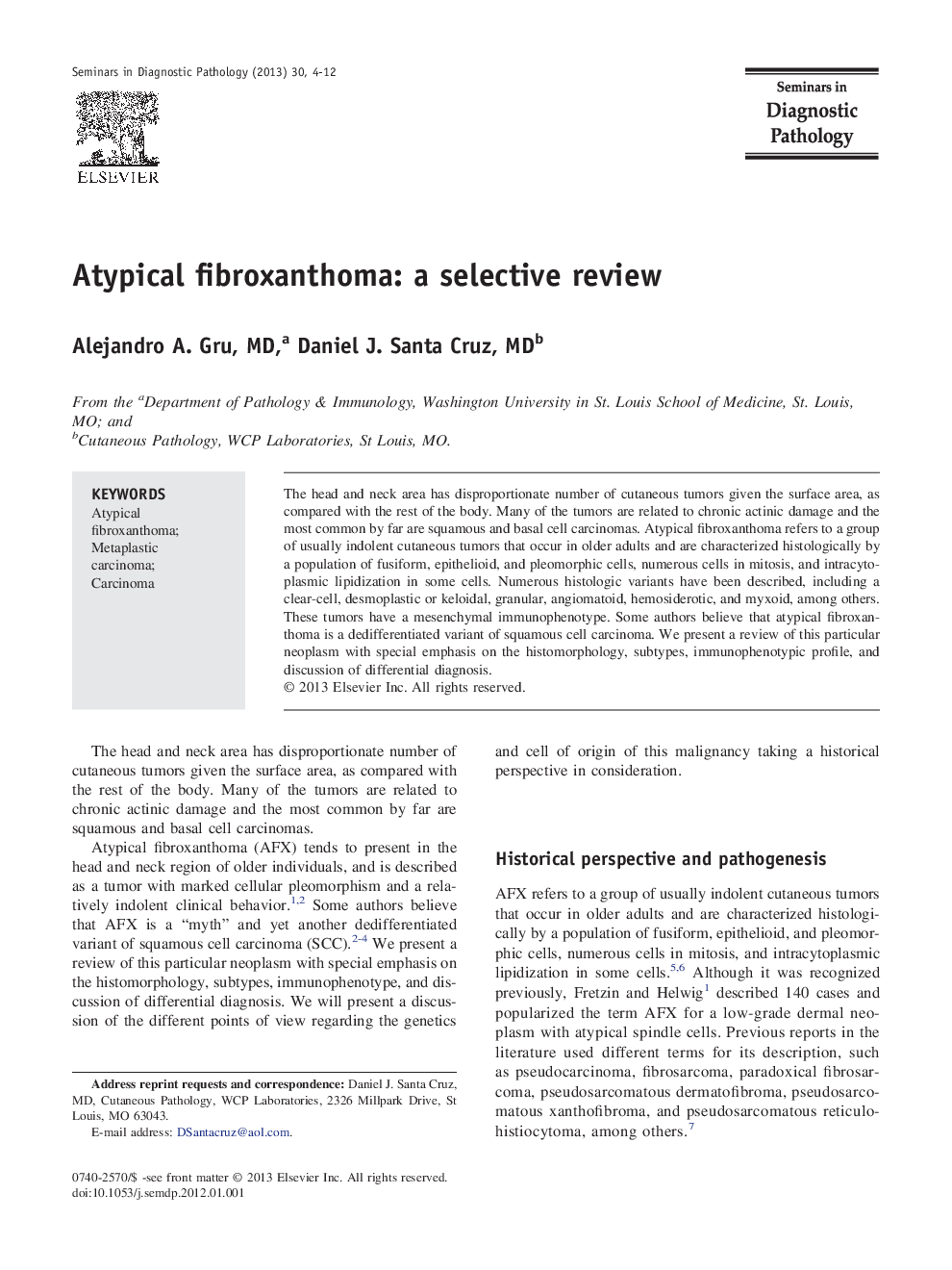| Article ID | Journal | Published Year | Pages | File Type |
|---|---|---|---|---|
| 4138576 | Seminars in Diagnostic Pathology | 2013 | 9 Pages |
Abstract
The head and neck area has disproportionate number of cutaneous tumors given the surface area, as compared with the rest of the body. Many of the tumors are related to chronic actinic damage and the most common by far are squamous and basal cell carcinomas. Atypical fibroxanthoma refers to a group of usually indolent cutaneous tumors that occur in older adults and are characterized histologically by a population of fusiform, epithelioid, and pleomorphic cells, numerous cells in mitosis, and intracytoplasmic lipidization in some cells. Numerous histologic variants have been described, including a clear-cell, desmoplastic or keloidal, granular, angiomatoid, hemosiderotic, and myxoid, among others. These tumors have a mesenchymal immunophenotype. Some authors believe that atypical fibroxanthoma is a dedifferentiated variant of squamous cell carcinoma. We present a review of this particular neoplasm with special emphasis on the histomorphology, subtypes, immunophenotypic profile, and discussion of differential diagnosis.
Related Topics
Health Sciences
Medicine and Dentistry
Pathology and Medical Technology
Authors
Alejandro A. MD, Daniel J. MD,
